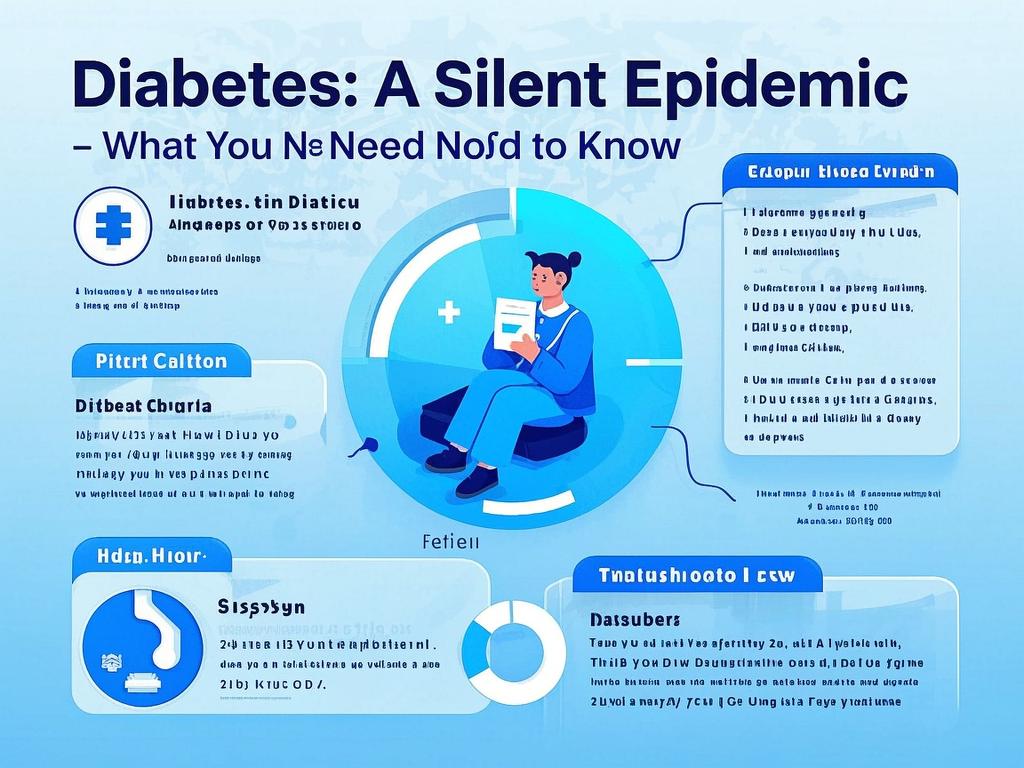
Diabetes: A Silent Epidemic - What You Need to Know
Diabetes, the silent epidemic that has been steadily creeping into our lives, is no longer a distant concern but a pressing issue that demands our immediate attention. In recent years, the prevalence of diabetes has skyrocketed, affecting millions of people worldwide. It's high time we shed some light on this condition and understand what it truly means for our health and well-being.
Let's start by looking at the numbers. According to the latest statistics, approximately 463 million people globally are living with diabetes, and this number is expected to reach 700 million by 2045. That's a mind-boggling increase! It's like a silent army marching through our populations, and we seem to be caught off guard.
So, what exactly is diabetes? Well, in simple terms, it's a metabolic disorder in which the body either doesn't produce enough insulin or can't effectively use the insulin it does produce. Insulin is like the key that unlocks the cells to let glucose (sugar) in, providing them with the energy they need. Without proper insulin function, glucose builds up in the bloodstream, leading to high blood sugar levels.
Now, let's take a trip down memory lane to understand how this silent epidemic has evolved over time. In the past, diabetes was often associated with older age and certain genetic factors. But today, it's hitting people of all ages, including children and young adults. Lifestyle factors such as a sedentary lifestyle, poor diet, and obesity have played a major role in this shift. We're living in a world where we're constantly on the go, but often in ways that are detrimental to our health. We sit at desks all day, then come home and plop down in front of the TV or our phones, barely moving a muscle. And our diets? Filled with processed foods, sugary drinks, and high-fat snacks. It's no wonder our bodies are rebelling.
Think about it this way: we're like modern-day gladiators, but instead of fighting in an arena, we're battling against our own unhealthy habits. And diabetes is the formidable opponent that's emerging victorious far too often.
But it's not all doom and gloom. There are ways to fight back against this silent epidemic. First and foremost, we need to take control of our diet. Ditch those sugary cereals and opt for whole grains, fruits, and vegetables. Cut back on the soda and reach for water instead. It's like swapping out a rusty old sword for a shiny new one in our battle against diabetes.
Exercise is another crucial weapon in our arsenal. You don't have to become a fitness fanatic overnight. Just start small, with a 30-minute walk every day. Gradually increase the intensity and duration as your fitness level improves. Exercise helps our bodies become more sensitive to insulin, making it easier for us to manage our blood sugar levels. It's like giving our bodies a tune-up to perform at their best.
Now, let's talk about the role of technology in the fight against diabetes. We live in a digital age, and there are some amazing tools available to help us manage this condition. From continuous glucose monitors that can track our blood sugar levels in real-time to insulin pumps that can deliver insulin precisely when needed, technology is making a huge difference. It's like having a personal health assistant constantly by our side, keeping tabs on our diabetes and helping us make informed decisions.
But here's the catch: while technology is great, it's not a substitute for a healthy lifestyle. We can't rely solely on these devices to keep us in check. We still need to make those important choices about what we eat and how much we move.
One of the biggest challenges we face in the fight against diabetes is the stigma associated with it. People often think of diabetes as a self-inflicted condition, blaming individuals for their poor lifestyle choices. But that's a shortsighted view. Diabetes is a complex disease influenced by multiple factors, including genetics and environment. We need to stop pointing fingers and start offering support and understanding to those who are living with it. It's like breaking down the walls that separate us and coming together as a community to combat this silent epidemic.
So, what can you do right now to join the fight? Well, if you're not already doing so, start by having a conversation with your doctor about your risk of diabetes. Get your blood sugar levels checked regularly. And if you have a family history of diabetes, be extra vigilant about your lifestyle.
Let's also spread the word about diabetes. Share this information with your friends and family. Encourage them to make healthy changes and take control of their health. Together, we can make a difference and turn the tide against this silent epidemic.
In conclusion, diabetes is a silent epidemic that's affecting millions of lives around the world. But by understanding the facts, making healthy lifestyle choices, leveraging technology, and breaking down the stigma, we can take steps to manage this condition and prevent it from spreading further. So, let's all stand up and be part of the solution. It's time to silence this epidemic once and for all!

